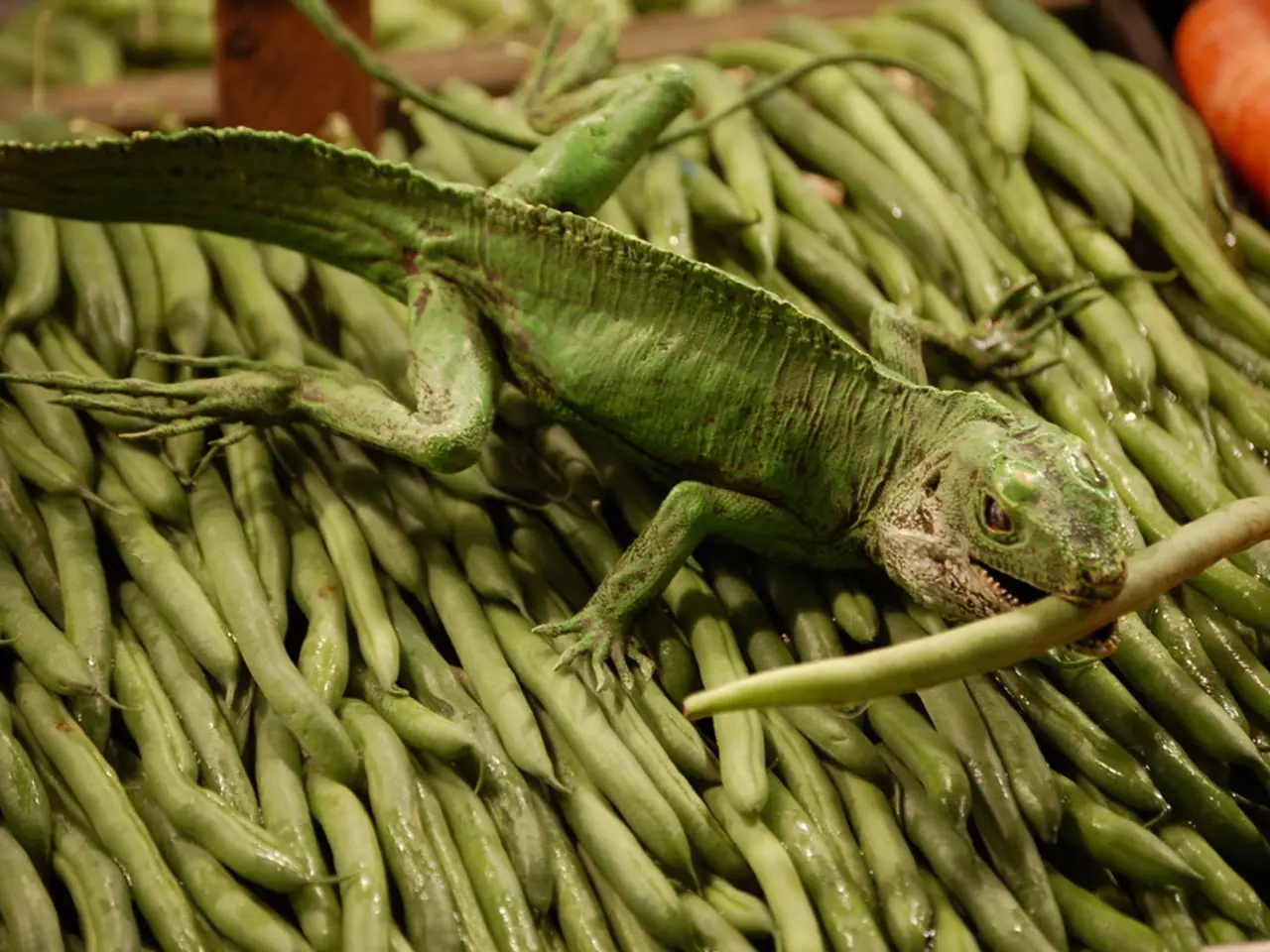Color-Shifting Labord's Chameleon: A Short-Lived Species with Demonstrable Hue-Variance
=============================================================================
In the heart of Madagascar's Kirindy Forest, a captivating spectacle unfolds. The Labord's chameleon, a unique lizard species native to the western part of the island, dazzles onlookers with its mesmerizing color-changing display.
This breathtaking "technicolor fireworks display" is a result of the chameleon's nervous system sending signals to its skin cells, allowing it to change colour in a matter of seconds. This ability is not only used for camouflage, but also for communication, whether attracting mates or expressing emotions.
Labord's chameleons have evolved remarkable life history strategies and adaptations to survive the harsh environment of Madagascar. Their life cycle is closely timed with seasonal environmental changes, with a very short lifespan and rapid development.
These reptiles have one of the shortest lifespans of any four-legged vertebrate, spending the majority of their life cycle as eggs. Once hatched, they mature very rapidly, reaching adulthood in a matter of weeks, typically within two months. This rapid lifecycle allows them to exploit the brief favorable conditions in their environment.
By condensing their entire adult existence into the wet season, Labord's chameleons maximize their chances of survival by ensuring access to essential resources for growth and reproduction. The mating season occurs in January, coinciding with the wet season in Madagascar. Female Labord's chameleons lay eggs in February and can produce up to 11 eggs.
Tragically, female Labord's chameleons die shortly after laying their eggs, while male Labord's chameleons engage in fierce battles for reproduction during the mating season. Despite this, the unique approach of Labord's chameleons allows them to thrive in a habitat characterized by environmental variability and uncertainty.
Their color change and camouflage abilities are essential for survival in an environment with many predators such as birds and snakes. The unique life cycle of Labord's chameleons is an adaptation to the unpredictable seasonal conditions of western Madagascar, with resources like food and water becoming scarce during the dry period.
Embryos of Labord's chameleons develop inside their eggs for nearly eight to nine months. By spending most of the year as embryos in their eggs and emerging during the rainy season to mate and lay eggs, Labord's chameleons have evolved a strategy to navigate the challenges of their environment.
The Labord's chameleon continues to captivate and inspire awe in all who have the privilege of witnessing them in their natural habitat. Their life history is a striking example of adaptation to a highly seasonal and challenging environment, making them a fascinating subject of study for biologists and naturalists.
- In the home-and-garden segment, it would be interesting to discuss the unique color-changing capabilities of Labord's chameleon, as a potential addition to a pet-friendly outdoor space, showcasing the role of science and environmental-science in supporting biodiverse lifestyles.
- From a lifestyle perspective, one could consider the Labord's chameleon's life strategy to maximize survival in the face of seasonal environmental changes, and examine how this adaptability can inspire valuable lessons in our own relationships with food and the environment.
- In the realm of environmental-science, further study on the Labord's chameleon could lead to insights on how species cope with environmental uncertainty and variability, shedding light on broader implications for ecosystem dynamics and long-term conservation efforts.




